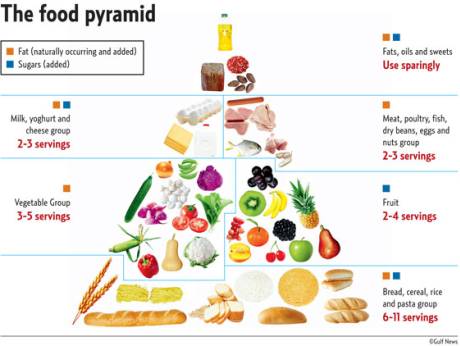
Daily workouts keeps the life force grow stronger. Use goal setting to improve your fitness, every day plan to complete that extra rep to greatness.

Daily workouts keeps the life force grow stronger. Use goal setting to improve your fitness, every day plan to complete that extra rep to greatness.

What are you trying to accomplish in your quest? Is it to honed your body into Mr Olympia or to attain a level of fitness where you look and feel good?
People start weight training to loose weight, but many start and stop after a couple of months. Planning is an important key factor and setting goals can keep you going when the tough sessions come along.
What is goal setting – giving yourself small tasks to reach a higher purpose. For example – getting the body that turns heads on the beach or just becoming healthy and fit. Make a start asap.
First thing is to take your time a give yourself a long term goal – the final product. Then think about how you are going to achcieve this by breaking down the steps. Mind map your thoughts and write them down on paper. Next on the agenda to look at short term goals. this could be by joining a gym. Then designing a fitness programme to maximise your goal. With setting your goals, look at the time you need to get there. This is not a sprint so think about getting there slowly but surley.

Walking is a simple way to improve and maintain your own level of fitness. If like me, reach the silver top age running takes it toll on the joints of the body. The pounding that happens during each contact of the floor starts to cause aches and pains of most parts of the body. Swimming is one of the best exercise for all ages, but mot of us have to travel to a pool to be able to swim ourselves to fitness.
So start walking, during the pandemic we were allowed to exercise each day. Walking was and still is my favourite form of keeping fit, this does include playing golf.
The pace of your walking is a important element to consider. To increase your fitness, your heart rate needs to beat a little faster, but this does not mean to overload to tempo where your breathing becomes
Starting a fitness workout programme is very easy and no need for fancy equipment, that costs a fortune. Get going with three exercises that cover the three parts of the body. With these easy exercises that can be performed everyday they will improve your physical shape and improve muscle strength.
Let’s get going. The first exercise which covers the upper body is the simple push up.

Easy to perform and just requires your body weight.
The next exercise is the sit up. This exercise covers the mid body.

The final exercise of the three is the squat.

Three exercises to give your body a full workout. Can be done at home, hotel room when traveling and at the office or work place. How many of each exercise do we perform. This is not technical, but very simple. I work at using time rather than the number of reps. With reps, you can cheat the exercise and not complete each one correctly, you just want to finish the exercise and move on. So technique is sacrificed, But with time, the number of reps done does not matter. As long as you complete each rep correctly, Doing them right helps the strength of that body part.
There we go simple but effective and of course there are numerous variations to each exercise to make the workout more interesting and refreshing.

Our bodies are prone to some sort of illness throughout our life. Common colds, flu and a lot more more serious types. One set back I regularly suffer with is sinus infection, apart from being diagnosed with diabetes. Over my many years this infection has really took it’s toll on my quality of life. If you suffer with the complaint you would understand and if not thank your lucky stars. The pain is out of this world, headaches, facial pressure, at times difficult to breathe properly.

This last bout has been on going now for six weeks, which is unusual, as they normally last about a month.
Update on the sinus infection, still going after 3 months now, definitely chronic sinusitis. I have been back to the doctors, more antibiotics. Using sinus rinse and steam to help, which has given me some relief and pain killers to ease the headaches and the facial pain.
The doctor said he would order a CT Scan, which he now tells me is not going to happen. No idea why and no reason given. So now have to wait for an appointment at the ENT. Which no doubt will take 18 weeks or more to come through. Will keep you up dated.
It looks like I have to put up with the ailments until who knows when or pay for private health care. This is looking the way to go.

How can meditation help people with the stress connected to the condition, of diabetes? This is a good question. My answer follows the line of calming the mind. Through meditation I have found that the process reduces stress of everyday life. This then has a better control of diabetes. With my own meditation I have also seen signs of lower blood glucose levels.
I have an improved focus in other areas of my life, and less depression and anxiety are all potential benefits of including meditation in my daily routine.
Diabetic Story is one of my blogs. The focus is about my day to day diabetes and features topics of information to help the diabetic community. Take please a look, I hope you find interest in reading the blog.

Yes, thank you to my new 20 followers to my new blog. I hope you find the posts of interest and keep coming back to the blog.
Once again: Thank You


What you eat does have an affect on your health. The foods you put into your body can
Eight valuable tips to start your healthy eating habits.
Are you thinking about getting fit for summer? Well that is if we are allowed to. Getting fit to crash the beach or because you thought it is about time I started to look after my body. Well looks at what we must do first.

First thing is first, if you have not been on a fitness programme for a long time or you are just starting. Best to go and get a full medical check up from your GP, medical provider. Doing this will ensure you don’t have any underlying problems.
Also remember take your exercise easy to begin with. Three days a week and slowing at first. Then build on your success when you feel the going gets easier.
